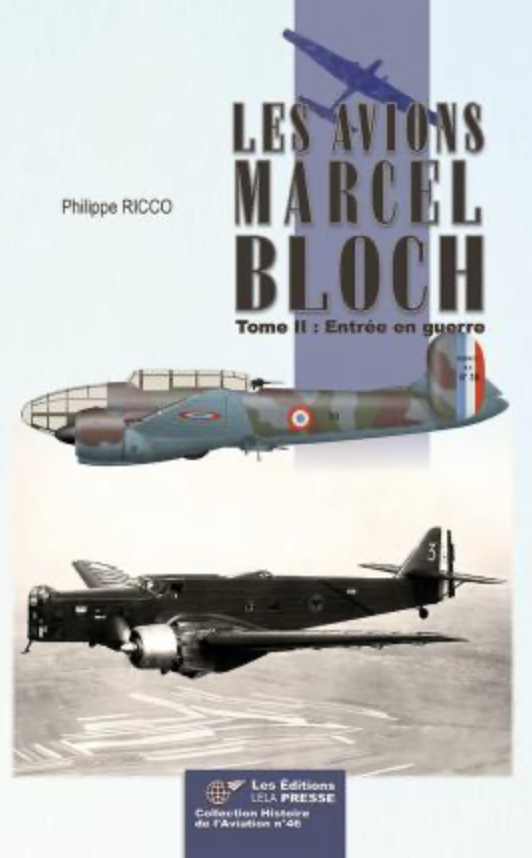After a first discreet attempt, Marcel Bloch was able to become an aviation industrialist thanks to the success of a second generation of MB 81, MB 120 and MB 200 aircraft. He then set a vast challenge to his teams to give birth to a third generation, which notably included the MB 130, MB 131, MB 210 and MB 220 models, which would make him one of the greatest French aircraft manufacturers of the first half of the 1930s. Four years after his return to Aviation, Potez, Breguet, Morane, Loire, Hanriot… most other aircraft manufacturers manufactured Marcel Bloch aircraft. Discover how he was able to transform bitter technical failures into resounding successes. How failed prototypes became some of the best French aircraft. But nationalizations and technical controversies, combined with the rise of anti-Semitic sentiments, hampered his extraordinary development. This second part highlights the successes and begins the initial difficulties of Marcel Bloch and his aircraft.
Contents of Volume II: Entry into the War
- Strikes and Nationalization
Second Generation of Bombers (MB 210, 211, 212, 210H, 218)
- Transport Aviation
Why Not a Three-Engine Aircraft? (MB 300)
What About a Twin-Engine Aircraft? (MB 220, 221)
Four-Engine Colonial Aircraft (MB 160, 162 Raid, 400)
- 1939-1940: A Month and a Half of War
Combat Aircraft (MB 170, 171, 172, 173, 174, 175, 176, 177, 178, 179, 174Z, 175T)After a first discreet attempt, Marcel Bloch was able to become an aviation industrialist thanks to the success of a second generation of MB 81, MB 120 and MB 200 aircraft. He then set a vast challenge to his teams to give birth to a third generation, which notably included the MB 130, MB 131, MB 210 and MB 220 models, which would make him one of the greatest French aircraft manufacturers of the first half of the 1930s. Four years after his return to Aviation, Potez, Breguet, Morane, Loire, Hanriot… most other aircraft manufacturers manufactured Marcel Bloch aircraft. Discover how he was able to transform bitter technical failures into resounding successes. How failed prototypes became some of the best French aircraft. But nationalizations and technical controversies, combined with the rise of anti-Semitic sentiments, hampered his extraordinary development. This second part highlights the successes and begins the initial difficulties of Marcel Bloch and his aircraft.
Contents of Volume II: Entry into the War
- Strikes and Nationalization
Second Generation of Bombers (MB 210, 211, 212, 210H, 218)
- Transport Aviation
Why Not a Three-Engine Aircraft? (MB 300)
What About a Twin-Engine Aircraft? (MB 220, 221)
Four-Engine Colonial Aircraft (MB 160, 162 Raid, 400)
- 1939-1940: A Month and a Half of War
Combat Aircraft (MB 170, 171, 172, 173, 174, 175, 176, 177, 178, 179, 174Z, 175T)
TEXT IN FRENCH
Voir les caractéristiques techniques
| Country | |
|---|---|
| Brand | |
| Model | TOME II |
| Manufacturer | |
| Drivers | |
| Scale | |
| Materials | NC |
| Release | 29-04-2025 |

 FR
FR
 EN
EN